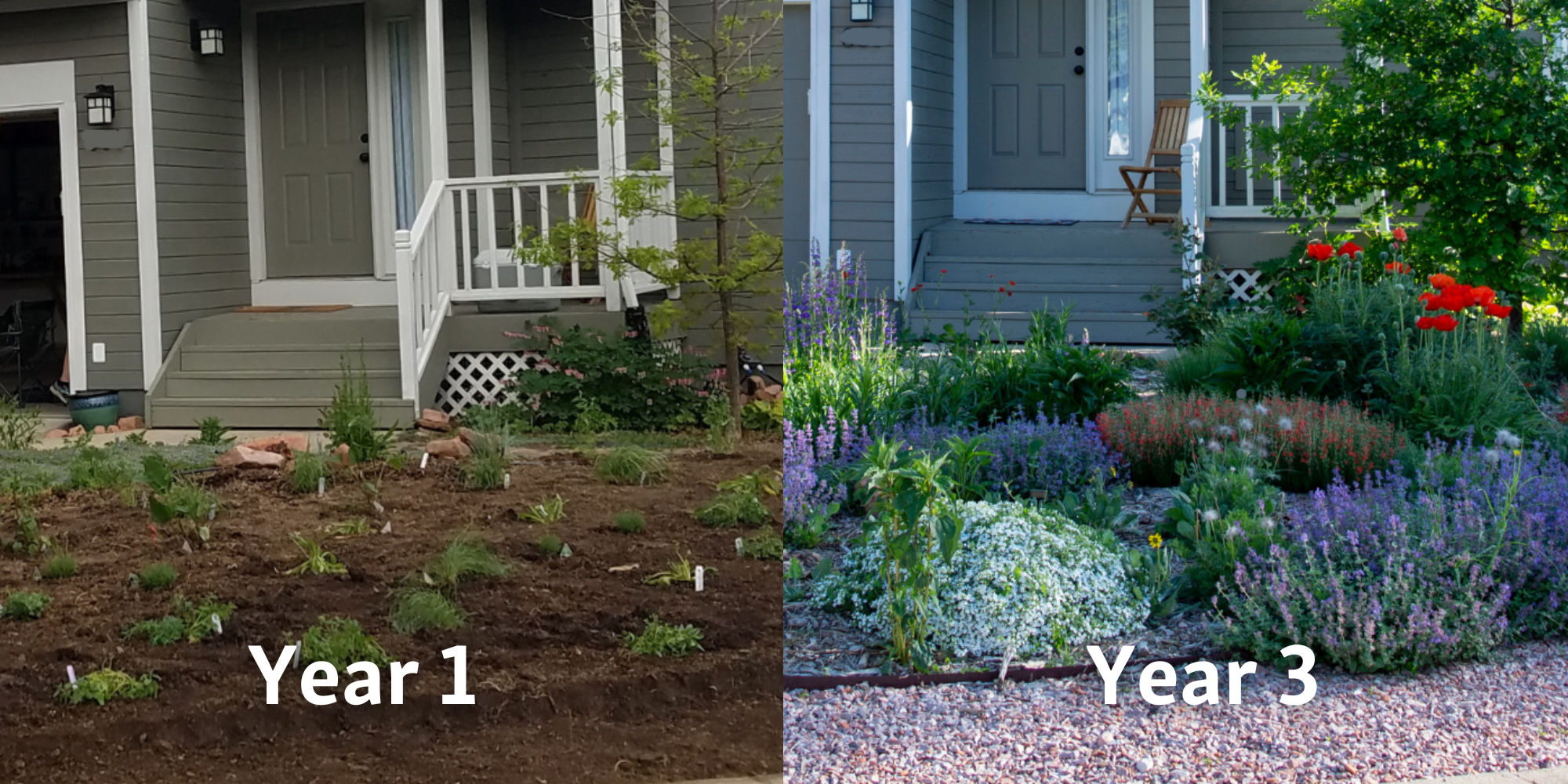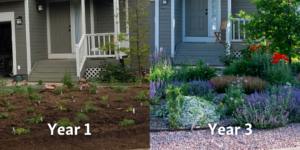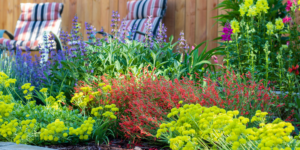Integrating your Garden In A Box kit to your outdoor space is simpler than you might think. While the Garden Info Sheet included with each kit provides sample Plant by Number design suggestions, your space’s unique dimensions may call for a bit of personalized adjustment. Luckily, you don’t need to be a landscaping expert to tailor a garden design to your specific space!
Check out these 5 aspects to consider when modifying a Garden In A Box design suggestion to fit your space:
1. Measure Your Space
Before you begin, measure the length and width of your planting space. Understanding your area allows you to envision how your plants will fill it. Check your Garden Info Sheet to determine the amount of square footage your garden fills up.
2. Think Ahead
It’s important to plan your space based on the fully mature size of the plants in your garden. We want plants to just barely touch when they’ve reached their mature size. Plants can get cozy with one another, but overcrowding may hinder their growth. Though plants may look spread out when initially placed, they will fill the space as they grow and mature over the next two years. Check your Garden Info Sheet to see the mature height and spread of each plant.
3. Height Matters
Strategically placing plants based on their mature height allows you to easily view your garden from various angles. If your garden backs up to a structure or fence, arrange shorter, ground-hugging plants along the front with taller plants at the back. For gardens viewable from all angles, consider placing taller plants in the center and surround them with shorter varieties along the perimeter. This short-to-tall approach allows viewers to easily see and admire your entire garden.
4. Design Aesthetic
The mature height and spread of plants are important to consider when creating a general layout of your garden, but how do you know what plants to place together? One option is to group like plant species, providing a more modern look that is preferred by pollinators. To provide a more balanced aesthetic, spread out like plant varieties or colors to create a more naturalistic visual. Whichever aesthetic you choose, know that you aren’t stuck with it! Plants without tap roots can be relocated the following year if you notice they don’t get proper sunlight or you don’t like their original placement.
5. Map It Out
Now that you have a general idea of where you’d like to place each plant, it’s time to finalize your plans! Consider sketching your planting area on grid paper, using different sized circles to represent various plant types. Large circles denote plants with a larger mature spread, while small circles represent plants with a smaller mature spread. Another option is to arrange your potted plants within your space before officially planting them, which may require a bit of imagination to keep in mind their mature height and spread! This hands-on approach enables you to visualize your garden’s layout more accurately and experiment with different arrangements before making a final decision.
Now armed with a clear blueprint of your garden layout, it’s time to bring your vision to life. Whether you’re sketching out your planting area or arranging your plant starters, these preparatory steps ensure that every plant finds its perfect place within your garden. By taking the time to plan and experiment, you’ll create a space that will bring life and color to your yard for years to come.















